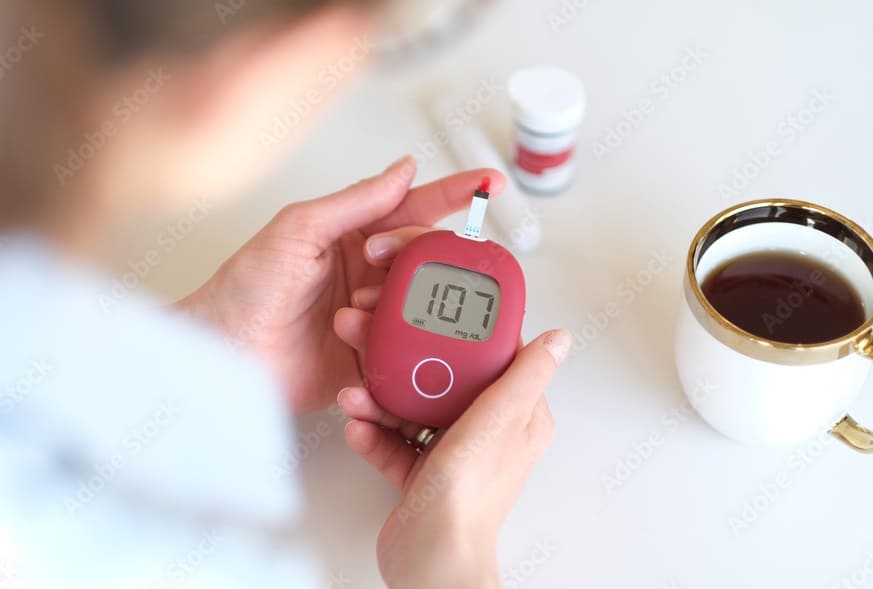You’ve done everything right — a balanced dinner, your evening workout, and even a good night’s sleep. Yet, you wake up in the morning to see your blood sugar levels are higher than expected. What’s going on? Don’t worry; you’re not alone. High blood sugar levels in the morning, also known as morning hyperglycemia, are a common phenomenon. Let’s dive into the reasons behind it, how it happens, and what you can do about it.
What’s Causing Morning Blood Sugar Spikes?
There are a few usual suspects behind morning hyperglycemia. Understanding these can help you take control of the situation.
1. The Dawn Phenomenon
Think of this as your body’s natural “morning prep.” Early in the morning (around 3 AM to 8 AM), your body starts releasing hormones like cortisol and growth hormone to get you ready for the day. These hormones nudge your liver to release extra glucose (sugar) into your bloodstream for energy.
For people with diabetes or insulin resistance, this can backfire. Your body might not produce enough insulin or use it efficiently to balance out the extra sugar, leading to a spike in your blood sugar levels.
2. The Somogyi Effect (Rebound Hyperglycemia)
This one’s a bit sneaky. If your blood sugar drops too low during the night—maybe because of too much insulin, skipping dinner, or an intense evening workout—your body panics. It releases stress hormones like adrenaline to bring your blood sugar back up. The result? A rebound high when you wake up.
3. Your Evening Routine
A carb-heavy dinner or a late-night snack can cause your blood sugar to stay elevated through the night. Since you’re not as active while sleeping, your body has a harder time processing the extra sugar.
4. Medication Timing
If your diabetes medication wears off before morning, your blood sugar might rise overnight. Timing really matters when it comes to managing blood sugar levels!
How to Identify the Cause?
If you want to get to the root of the issue, here’s what you can do:
1) Check your blood sugar at bedtime, around 3 AM, and when you wake up:
- If it’s normal at bedtime but high by 3 AM and still high in the morning, it’s probably the Dawn Phenomenon.
- If it’s low at 3 AM and high in the morning, the Somogyi Effect could be to blame.
2) Track your meals, exercise, and medications:
Keeping a simple journal can help you spot patterns and identify what might be triggering those morning spikes.
What Can You Do to Manage It?
Don’t worry—there are ways to tackle morning hyperglycemia. Here are some tips to get you started:
1. Adjust Your Evening Routine
- Aim for a balanced dinner with complex carbs, protein, and healthy fats to keep your blood sugar steady.
- Avoid late-night snacking, especially sugary or carb-heavy treats.
2. Revisit Your Medication Plan
- Talk to your doctor about whether your current medication plan needs tweaking. Sometimes a small change can make a big difference.
3. Consider a Bedtime Snack
- If the Somogyi Effect is the issue, a small snack with protein and a bit of healthy fat before bed (like a handful of nuts) can prevent your blood sugar from dropping too low overnight.
4. Stay Active
- A light walk after dinner can help your body process sugar more efficiently and reduce the chances of morning spikes.
5. Consider a CGM (Continuous Glucose Monitor)
- These devices can track your blood sugar levels throughout the night, giving you and your doctor valuable insights into what’s happening while you sleep.
When to Seek Medical Advice?
If you’re doing all the right things but still waking up to high blood sugar levels, it’s time to chat with your healthcare provider. They can help you fine-tune your routine or adjust your treatment plan to keep things on track.
Final Thoughts
Dealing with morning hyperglycemia can feel like a mystery, but with a bit of detective work and the right adjustments, you can manage it. Remember, small changes—like tweaking your evening routine or working closely with your doctor—can make a big difference.
Have you experienced high blood sugar in the morning? What’s worked for you? Let’s talk in the comments below—your story could inspire someone else!
Also Read:
